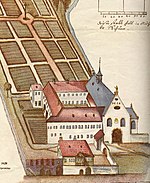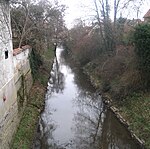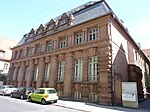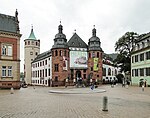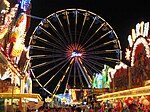Speyer
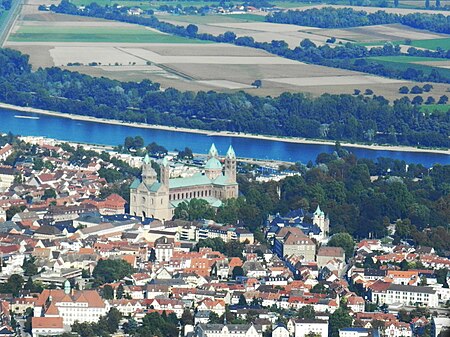
Speyer (German: [ˈʃpaɪɐ] , older spelling Speier; Palatine German: Schbaija; French: Spire), historically known in English as Spires, is a city in Rhineland-Palatinate in Germany with approximately 50,000 inhabitants. Located on the left bank of the river Rhine, Speyer lies 25 km (16 miles) south of Ludwigshafen and Mannheim, and 21 km (13 miles) south-west of Heidelberg. Founded by the Romans, it is one of Germany's oldest cities. Speyer Cathedral, a number of other churches, and the Altpörtel ("old gate") dominate the Speyer landscape. In the cathedral, beneath the high altar, are the tombs of eight Holy Roman Emperors and German kings. The city is famous for the 1529 Protestation at Speyer. One of the ShUM-cities which formed the cultural center of Jewish life in Europe during the Middle Ages, Speyer and its Jewish courtyard was inscribed on the UNESCO World Heritage List in 2021.
Excerpt from the Wikipedia article Speyer (License: CC BY-SA 3.0, Authors, Images).Speyer
Bahnhofstraße,
Geographical coordinates (GPS) Address Nearby Places Show on map
Geographical coordinates (GPS)
| Latitude | Longitude |
|---|---|
| N 49.319444444444 ° | E 8.4311111111111 ° |
Address
Villa Sick
Bahnhofstraße 17
67346 , Speyer-West
Rhineland-Palatinate, Germany
Open on Google Maps

